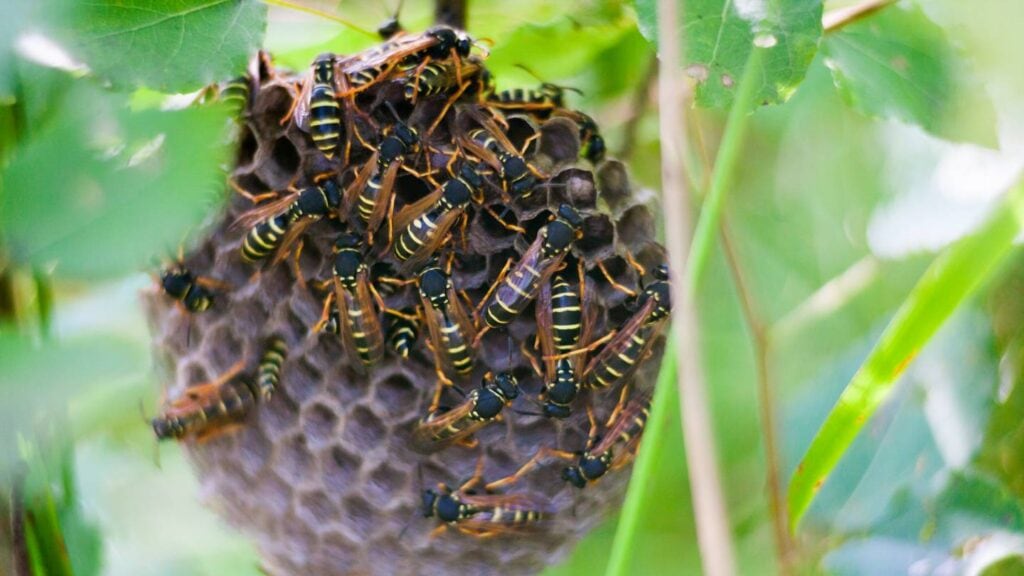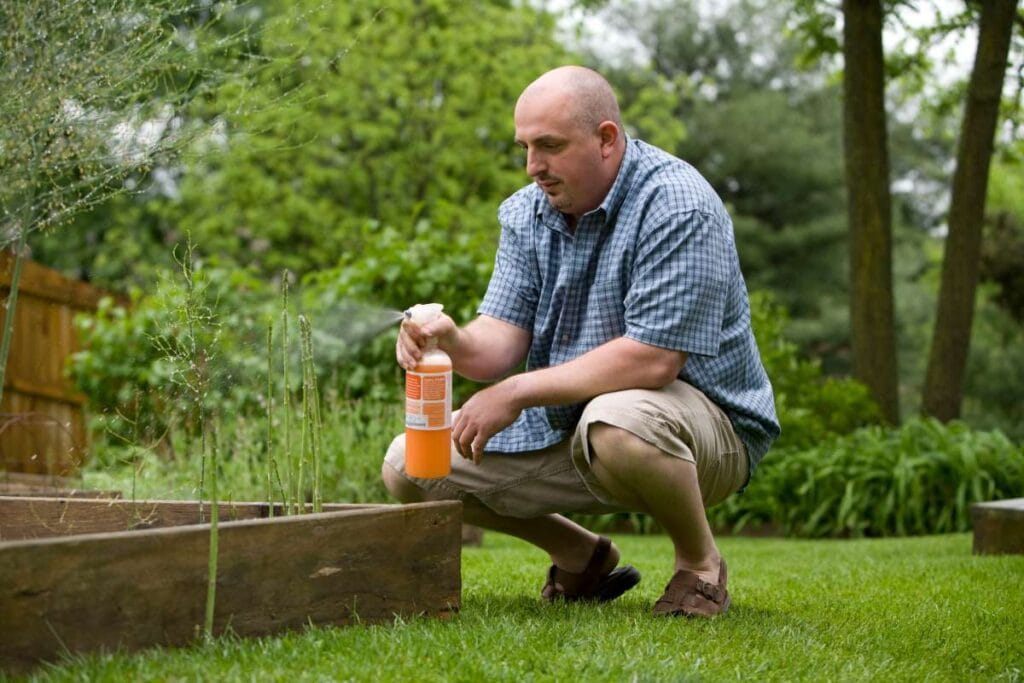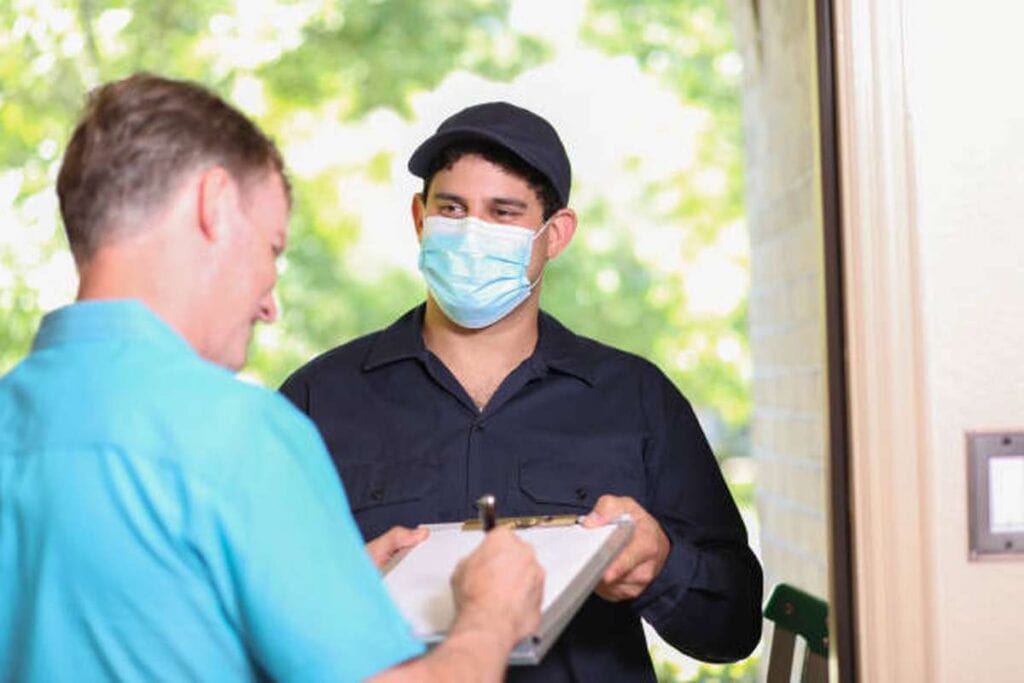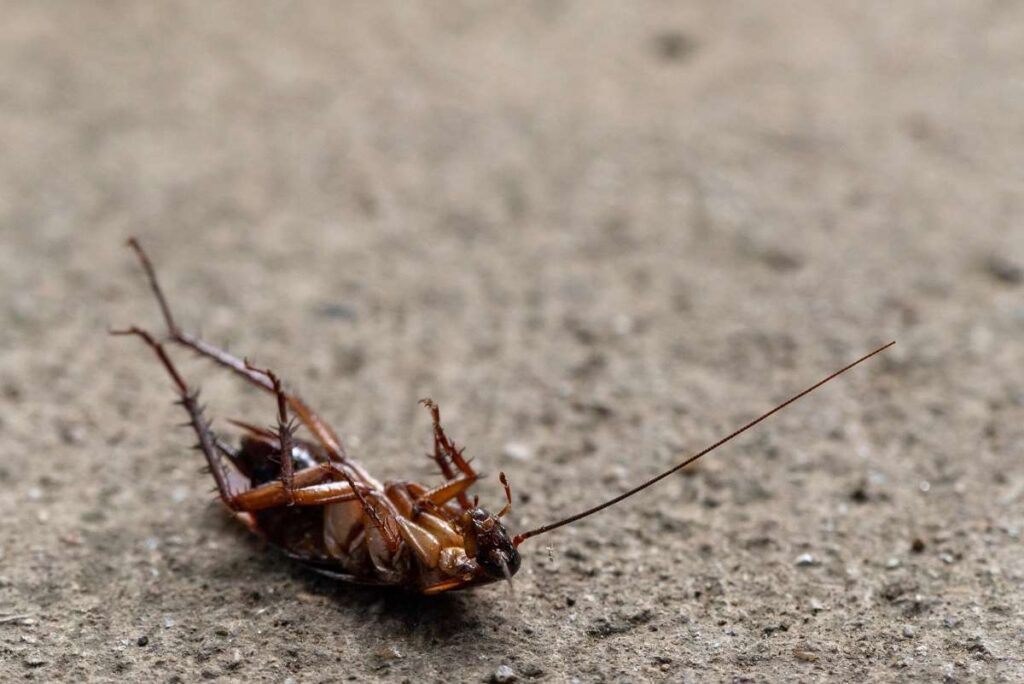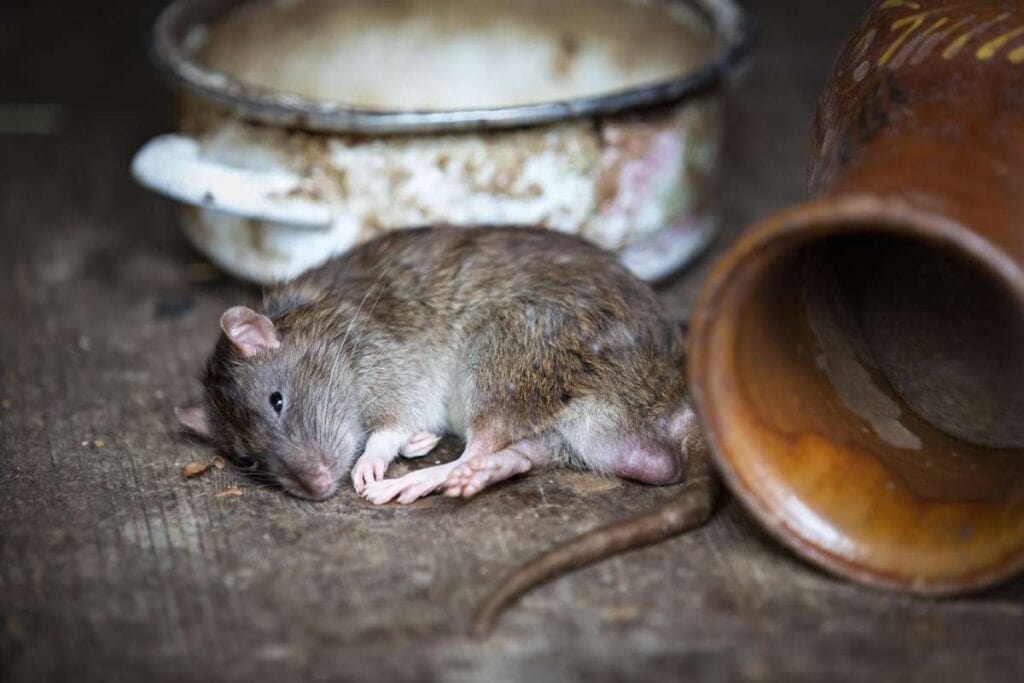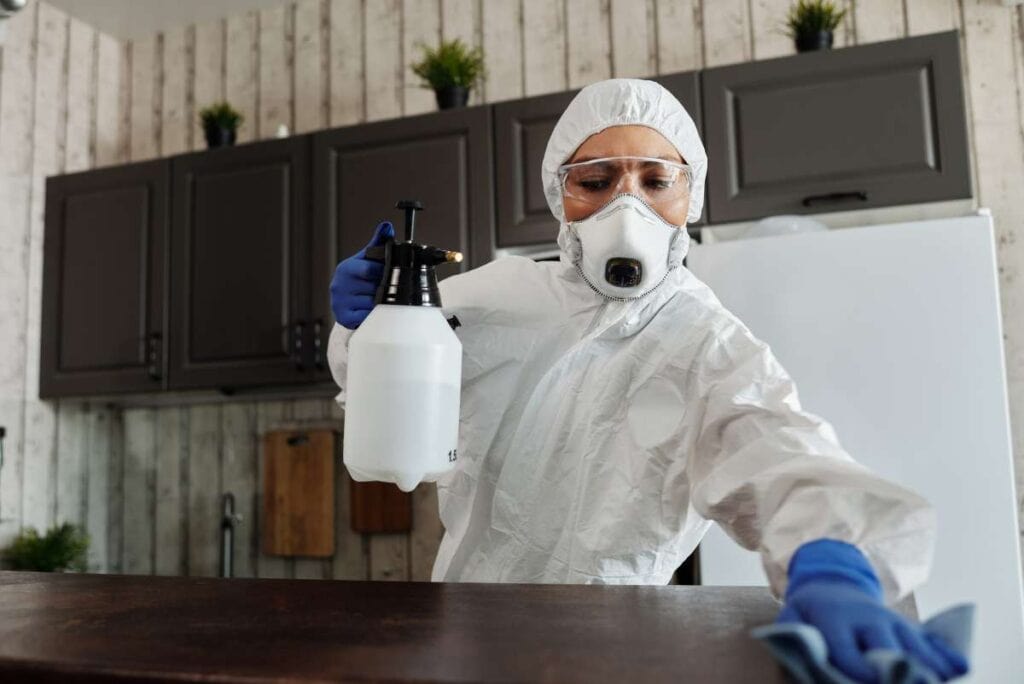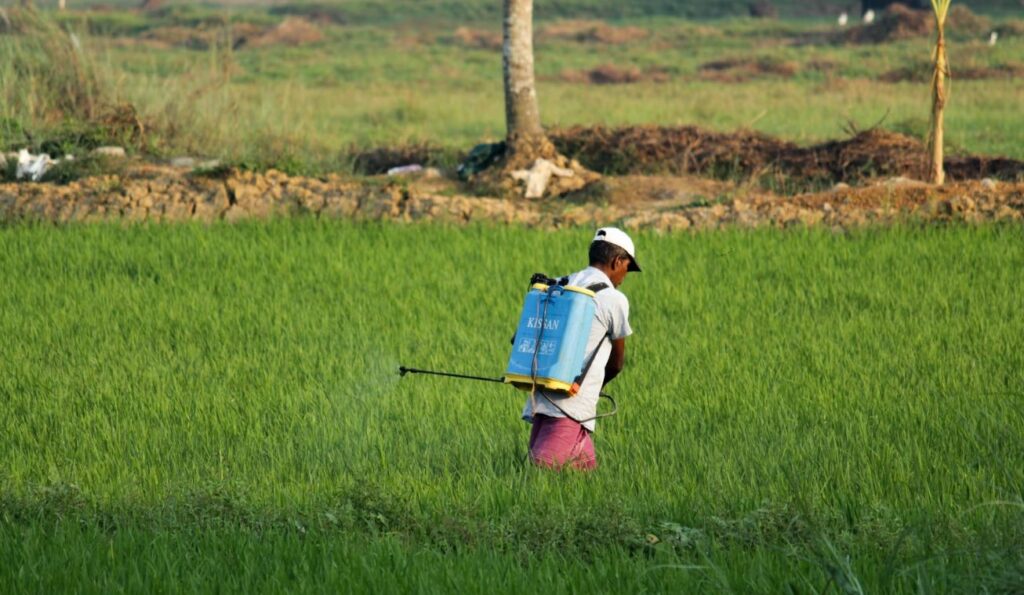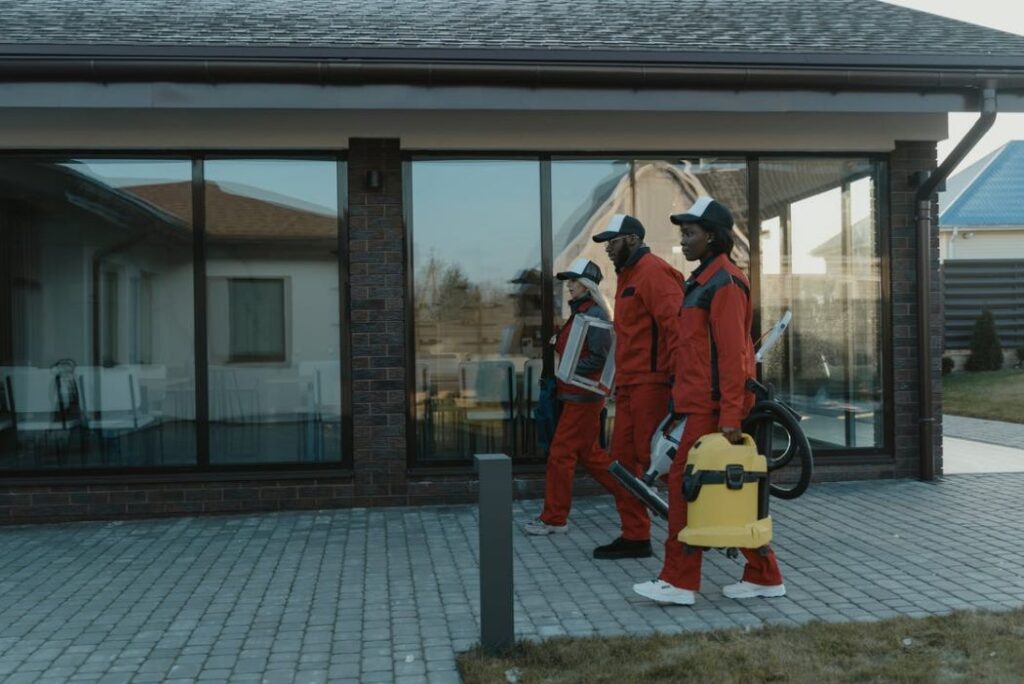When you're out in your garden watching bees pollinate flowers, have you ever been startled by a sudden swarm or nest? When infestations happen, the delicate dance of these pollinators can take a dangerous turn. So, how can experts make sure everyone is secure and calm returns?
Professional pest control isn't just about getting rid of pests; it's also about keeping things in balance and protecting what's important. With their specialised knowledge, these professionals use cutting edge methods and tools for controlling bees and wasps. Their method is thorough and accurate, covering everything from eco-friendly ways to get rid of pests to home safety measures.
What happens behind the scenes, though? How do these experts keep both people and the important part that bees and wasps play in our environment safe? We will learn more about pest control, which will help us understand and appreciate these busy creatures in new ways.
Bee/Wasp Infestation Signs
For the past week or two, you've woken up to an irate little hum, like a miniature lawnmower chopping through the air, and then, out of nowhere, they materialise. Everywhere you look, wasps and bees are ready to sting you.
The kids won't go outdoors for fear of getting stung, and you can't be sure that someone isn't allergic because they've never been stung before. And the truth is, you'd rather not know. So, how can you distinguish between a serious wasp infestation and a transient flurry of flying insects? If you suspect a wasp infestation in your home, watch for these four major indicators:
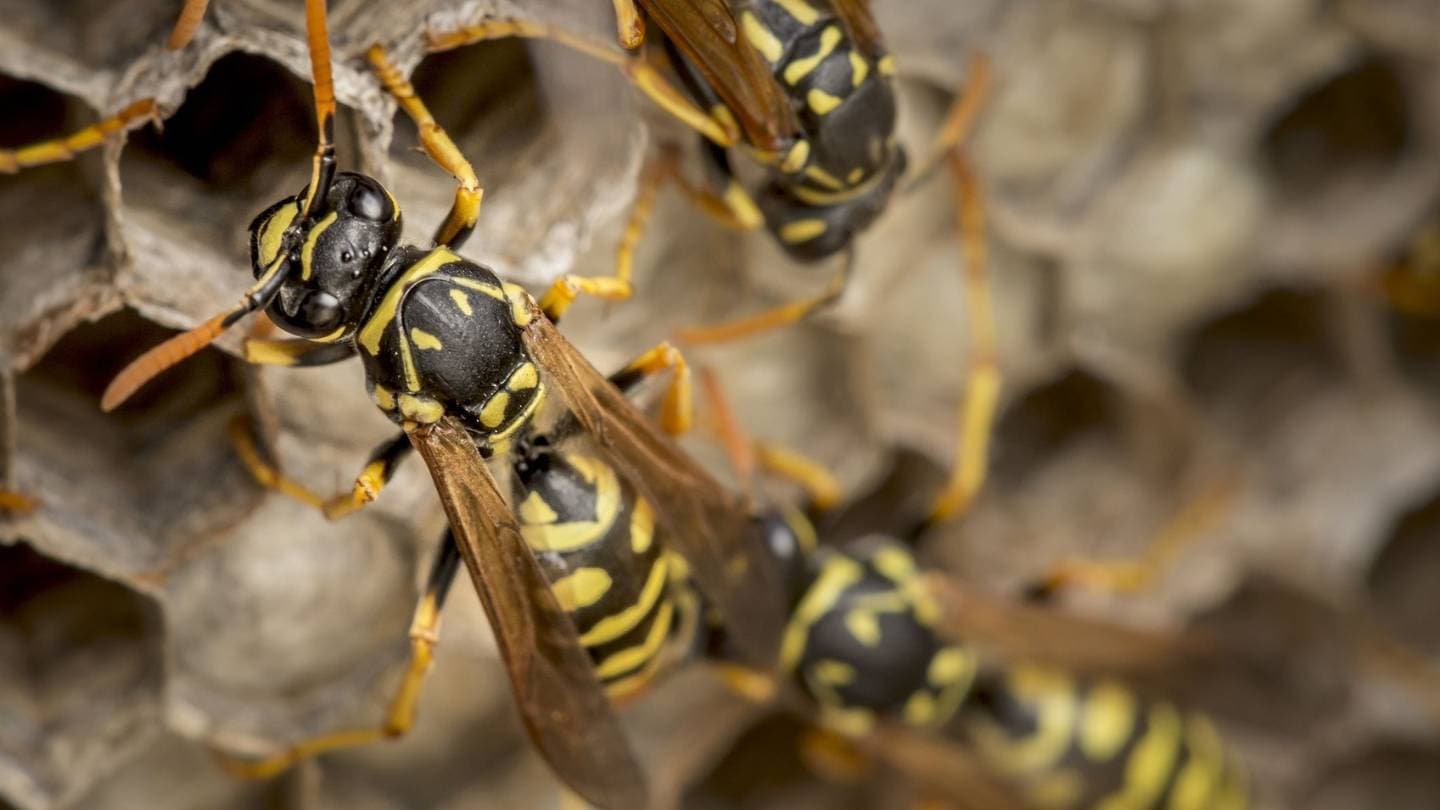
Listen To The Sound
When a group of bees buzz together, they make a clear sound. Wasps are the same way. You can hear them if you pay attention because these bugs also eat wood. Most of the time, the sound of the wasp or beehive will lead you to it in or near the house.
Wasps And Bees Are Observed Everywhere
This one ought to be clear-cut. One of the first indications of an infestation is the sighting of wasps and bees within or around the home. There is an issue if you see a lot of bees entering and leaving the residence. You have to start looking for the hive if there are an excessive number of bees buzzing about in your line of sight. Remember to inspect the interior of residential attics and chimneys.
Intense Eczema
Finally, if you come across an active wasp or beehive in or near your home, it's a solid sign of a bee infestation. It is necessary to eliminate the beehive in a safe manner. Wasp or bee-catcher is a possible occupation, however it's not very common anymore. So, consult a professional exterminator once you've settled on the finest pest inspection.
There Are Holes
If carpenter bees are living in your home, you will see holes in hard plants close to your home. Always keep an eye out for sawdust to know for sure if there are bees or wasps in the house. Check your doors, windows, deck, boards, and ceilings for any sawdust that fell from the saw.
Bees & Wasp Treatment
For flowering plants to produce pollen, bees are needed. When it comes to habitats with blooming plants, they are the most important pollinator. In response to fluctuations in availability and demand, beehives will shift their attention from collecting pollen to collecting nectar. Bees pollinate most insects, providing approximately a third of human food.
The bee population has dropped a lot in the past few years, which is bad. Without the work of the bees, many food items that we rely on will not be available if the population keeps going down.
This is why pest control services have begun to eliminate bees without using chemicals. The bees, honeycomb, and hive are all gently and safely removed using this method. Nevertheless, remember that various situations and the hive's location dictate the specific eradication procedures.
Swarm Removal
- A lot of the time, swarms hang from trees or fences.
- After the bees are drawn into a screened box, they are extracted using a bee vac.
- A bee farm is the last destination for the collected bees.
Formed Colony Removal
Two approaches exist for eradicating a colony that has already taken root.
Method 1 – Trapping
Trapping is a way to get through a structure when cutting a hole is not an option, like in brick or stone buildings.
- Any secondary entries are blocked off by the creation of a conical-shaped one-way trap above the primary entrance.
- The bees can exit the hive, but they can't come back.
- Less food is available.
- A smaller colony is seen.
- Placing the trap hive next to the conical trap and baiting it with a queen bee is standard practice.
- The trap hive is soon surrounded by bees.
- A new colony is established in the trap hive once the bees accept the queen.
- The original colony gets very weak, while the trapped group starts to do well.
- This is where the conical trap is taken out. This opens the door for the bees to return to the hive and gather honey and nectar.
- The entrance may be blocked once the trap hive extracts leftover nectar or honey.
Benefits of this procedure include removal of extra nectar and honey and minimum damage to the building (minor stapling of funnel, caulking, and screws). The maximum time required to complete this process is twelve weeks.
Method 2 – Cut Out
Physically removing the bees and all of their combs is the cut-out procedure. In terms of preventing bee hives in the future, this strategy has shown to be the most effective.
- To access the complete nest, one must open the hole in the ceiling or wall.
- A bee vac pulls bees into a screened inclosure.
- Sections of the wax comb are taken off and inserted into wooden frames.
- The hole is scraped clean.
- The outside door is locked.
This method is good because it gets rid of all traces of the colony and can be done in less than 4 hours most of the time.
Extracting Wasps And Their Hive Mounds
A few measures you may take to lessen the likelihood of wasp stings include getting rid of wasps and their nests. However, removing a wasp nest with its stinging resident is not straightforward and often quite risky.
This occurs because wasps in nests exhibit abnormally high levels of aggression whenever they perceive a danger. Stinging you and anybody else in the vicinity is their defence mechanism. If you want to get rid of wasps, you shouldn't remove the nest but rather treat it with the wasps themselves.
Exterminators often use two techniques: soaking the nest and dusting the nest. Going to the nest and bathing it with pesticide is the most risky option since it will make the wasps fly out and either try to flee or attack. The exterminator can break down the nest once it is soaked or when all wasps have left it so it won't be a home for future infestations.
Since nest dusting entails sprinkling pest powder over the nest's entry and exit holes, it poses less danger than other methods. This process is performed several times to ensure the area surrounding the nests is coated completely. Within a few weeks, the wasps will usually have died off.
If you want to be sure you won't get stung by wasps, call the experts at Positive Pest Solutions. We can assist you in securely removing wasp nests since we are among Melbourne's top pest and wasp exterminators.
Professional Pest Control Services: Professional pest control services are indispensable
In terms of preventing pest infestations in residential and commercial properties. Important parts of what they do are these:
Infestation Inspection And Assessment:
Experts in pest control will first conduct a comprehensive inspection of the afflicted region to determine the kind and level of the infestation. This is a must-do if you want to know how to tackle the pest problem and what solutions work best.
Pest Control Plan Customisation:
The inspection results inform the development of a unique strategy for pest management. To successfully deal with the pest problem, this plan details the precise tactics and methods employed. A more favourable result can be achieved by adapting the strategy to the specifics of each infestation.
Safe Bee Removal And Relocationwhenever Possible:
Safely removing and relocating bees is the top priority for professional pest control services when dealing with bee infestations. Because of their vital role as pollinators should be protected for the environment's sake. Pest control professionals frequently collaborate with beekeepers or groups focusing on bee relocation to guarantee the bees are transferred to an appropriate environment.
How To Remove Wasp Nests Without Harm:
Experts in pest management know how to remove wasp nests and other aggressive pests safely and effectively. In most cases, this calls for using pesticides and specialised machinery designed to do as little harm as possible to both people and the environment. It is critical to take all necessary precautions to ensure the safety of the pest control technicians and anybody else in the area.
Prevention Of Future Infestations:
Professional pest control services don't just get rid of existing infestations; they also teach their clients how to stay pest-free in the future. To prevent pests from coming back, this may involve suggesting changes to the structure or landscaping, as well as suggestions for better cleaning procedures and the closing of access places.
How Do You Pick The Best Pest Control Service?
To safely and successfully eliminate pests in your home or company, use the correct pest control provider. Consider these factors before hiring a pest control professional:
Reputation And Experience:
- Try to choose pest control services with a solid reputation.
- If you know someone who has used a pest control service before, ask for a recommendation.
- To get a feel for the firm's credibility, review their ratings and reviews online.
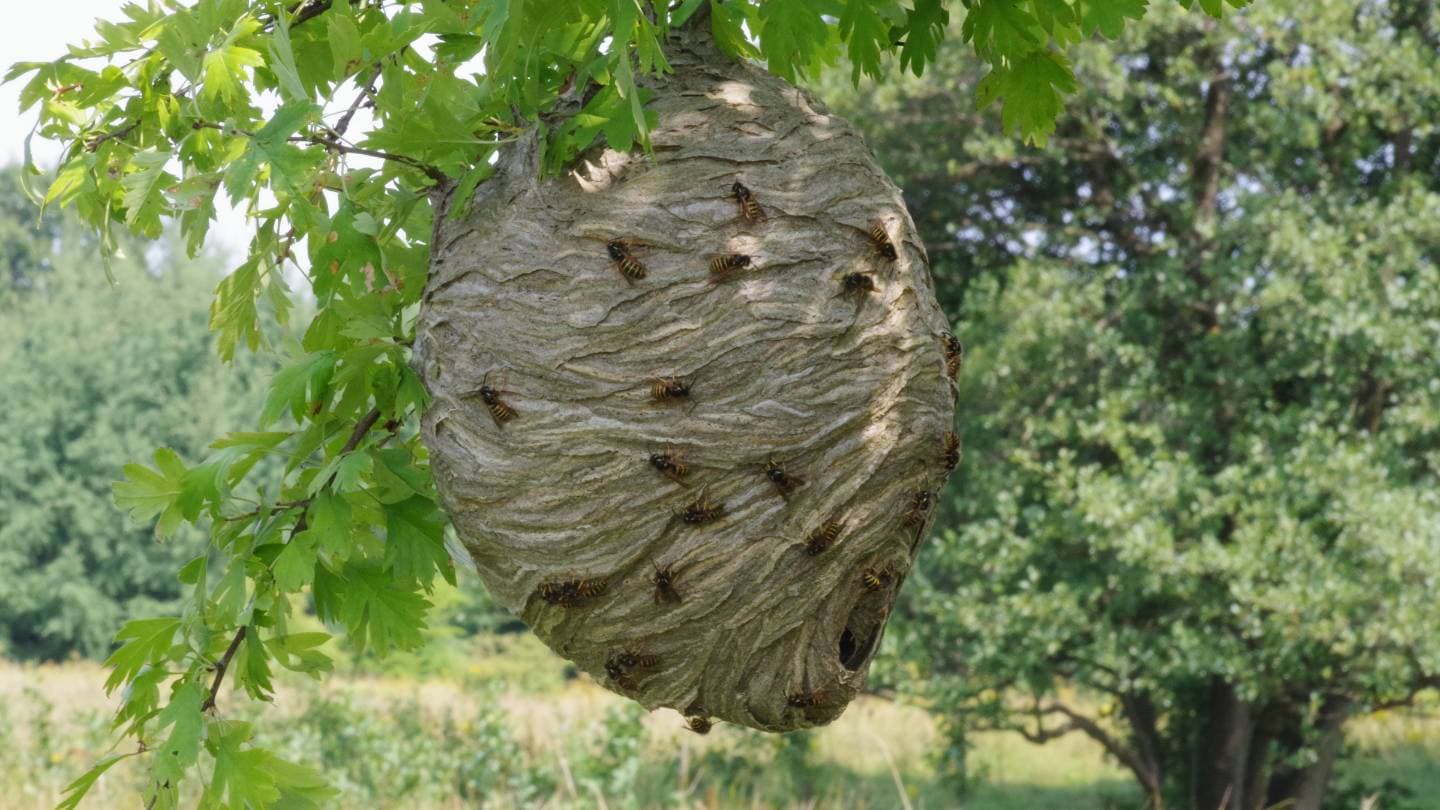
Licensing And Qualifications:
- Check the company's and its employees' credentials to ensure they can legally treat pests in your region. Different places have different licensing requirements.
- Make sure the exterminators have the proper education and credentials to deal with your bug problem.
Insurance:
- Before hiring a pest control service, ensure they have liability insurance to pay for any accidents.
- Protect the professionals working on your property by inquiring about worker's compensation insurance.
Pest Specialisation:
- Some companies that get rid of bugs only deal with certain kinds, like rats, insects, termites, or wildlife.
- Pick a service that has dealt with your particular bug problem before.
Treatment Methods:
- Find out what the firm utilises to keep pests at bay.
- Enquire about non-toxic or environmentally friendly alternatives if you're worried about chemicals.
Conclusion
To keep your home safe from bees and wasps, you need to hire professional pest control services. They use high-tech tools and ways to get rid of these pests, keeping things in balance and protecting what's important. Listening to the sound of bees buzzing together, seeing wasps and bees everywhere, and having severe eczema are all signs of an invasion.
About a third of the food we eat comes from plants that bees pollinate. In recent years, the number of bees has gone down, so pest control services are needed to get rid of bees without using chemicals. To get rid of a swarm, bees are drawn into a box with mesh and then removed using a bee vac. A bee farm is the last place where bees that have been caught go.
There are two ways to get rid of a colony: catching and cutting out. When you trap bees, you make a cone-shaped one-way trap above the main entry. This lets the bees leave but not come back. This process can take up to twelve weeks and doesn't damage the house much. Cut-out is the best way to stop future infestations because it includes physically removing bees and their combs.
Additionally, hiring professional pest control services is an important part of making sure that bees and wasps can live safely. They help keep people and the environment safe and healthy by finding infestations, recognising the signs of infestations, and using the right methods.
Wasps are known to be mean, and they can sting when they feel threatened. It is necessary to treat the nest with wasps themselves in order to get rid of wasps. There are two ways that exterminators get rid of pests: they soak the nest and dust it. The most dangerous choice is to spray poison on the nest, which could make the wasps run away or attack.
Nest dusting, which includes spraying bug powder over the holes where the bugs can get in and out of the nest, is less dangerous. Positive bug Solutions can help you safely get rid of wasp nests. They are one of the best bug and wasp control companies in Melbourne.
When it comes to keeping homes and businesses from getting pests, you need professional pest control services. They do a check and assessment of the infestation, come up with a plan for getting rid of the pests, and make sure that the bees are moved and removed safely.
To get rid of wasp nests in a safe and effective way, they use poisons and special tools. They also teach customers how to keep pests away in the future by offering changes to the building, the landscaping, how to clean, and where pests can get in.
To find the best pest control service, think about their name, how long they've been in business, their experience, their licences and qualifications, their insurance, the types of pests they specialise in, how they treat them, and if they have non-toxic or eco-friendly options. This will help make sure that your pest control works well and safely.
Content Summary
- Professional pest control for bees and wasps involves identifying and safely managing infestations.
- Experts use eco-friendly methods and tools to balance pest control and environmental protection.
- Recognising an infestation includes observing increased bee/wasp activity and listening for buzzing sounds.
- The presence of hives or nests is a clear sign of an infestation.
- Carpenter bees can leave holes and sawdust in wooden structures.
- Pest control services focus on non-chemical bee removal to protect their ecological role.
- Bees are essential for pollination and food production, making their preservation important.
- Swarm removal involves safely capturing bees and relocating them to bee farms.
- Formed colony removal can be done through trapping or physical removal.
- Trapping involves using one-way traps and a trap hive to transfer bees.
- The cut-out method physically removes bees and combs, effectively preventing future hives.
- Wasp nest removal is risky and requires professional expertise.
- Exterminators use methods like soaking or dusting the nest with pesticides.
- Professional services ensure the safe and effective removal of wasp nests.
- Pest control services start with a thorough inspection and assessment of the infestation.
- Customised pest control plans are developed based on the inspection results.
- Safe bee removal and relocation are prioritised due to their environmental importance.
- Professionals use safe methods to remove wasp nests without harming people or the environment.
- Future infestation prevention is a key part of professional pest control services.
- Professional services provide advice on structural changes and cleaning practices to deter pests.
- Choosing a pest control service involves considering their reputation and experience.
- Ensure the pest control service is licensed and qualified for the specific pest problem.
- Liability insurance and worker's compensation insurance are important for protecting the property and professionals.
- Select a service with experience in handling the specific type of pest you're dealing with.
- Inquire about the treatment methods used and opt for eco-friendly options if possible.
- Professional pest control is vital for effectively managing residential and commercial infestations.
- Initial steps include identifying the type and extent of the infestation.
- Bee and wasp control involves specific techniques to minimise harm and maximise effectiveness.
- Professional services emphasise environmentally responsible pest management.
- Advanced tools and methods are used for safe and thorough pest elimination.
- A professional approach ensures the protection of pollinators like bees.
- Techniques used by experts are tailored to address the unique challenges of each infestation.
- Regular maintenance and monitoring help prevent future infestations.
- Professionals collaborate with beekeepers for safe bee relocation.
- Effective wasp control involves handling aggressive pests without endangering humans.
- Customised strategies are essential for addressing different pest situations.
- The choice of a pest control service should be based on their expertise in dealing with bees and wasps.
- Checking the service's online reviews and ratings can provide valuable insights.
- The safety and success of pest control depend on the experience and skill of the professionals.
- Pest control services should offer a range of methods to suit different infestations.
- The goal is to achieve a pest-free environment without disrupting the ecological balance.
- The right pest control service can provide long-term solutions to pest problems.
- Continuous education and training are crucial for pest control professionals.
- Effective pest control requires an understanding of pest behaviour and habitat.
- Safety measures are paramount in pest control operations.
- Professional pest control services offer a comprehensive approach to managing infestations.
- Selecting a pest control provider involves evaluating their approach to environmental sustainability.
- The effectiveness of pest control depends on the correct identification of pest species.
- Integrated pest management strategies are preferred for their long-term effectiveness.
- The relationship between pest control services and their clients is key to successful pest management.
Frequently Asked Questions
To prevent future bee and wasp infestations, you can take several steps:
- Seal any cracks or openings in your property.
- Remove food sources that may attract these insects.
- Regularly inspect your property for signs of nests or hives.
- Consider planting bee and wasp-repelling plants in your garden.
Professional pest control services for bee and wasp infestations typically begin with a thorough inspection of the affected area. They identify the type of bee or wasp species involved and assess the severity of the infestation. Once the assessment is complete, they develop a customised plan to safely remove the pests.
Yes, professional pest control services prioritize safety for both the environment and pets. They use eco-friendly and low-toxicity methods to remove bees and wasps. Most reputable pest control companies also take steps to ensure that their treatments won't harm beneficial insects like honeybees and other non-target species.
The time it takes to eliminate bee and wasp infestations depends on several factors, including the size of the infestation and the species involved. In most cases, it may take a few days to a couple of weeks. Pest control professionals will provide you with a clear timeline during the initial assessment.
In most cases, it's not necessary to leave your property during pest control treatments for bee and wasp infestations. However, the pest control experts will provide specific instructions to ensure your safety during the treatment process. It's advisable to follow their guidance and take precautions.

